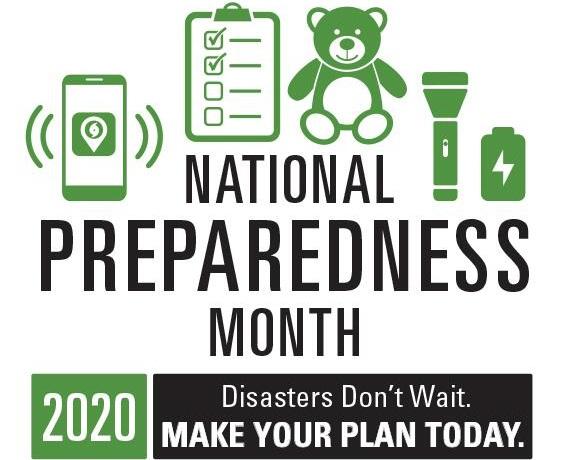National Preparedness Month Week 4: Teach Youth About Preparedness

On May 3, 1999, Oklahoma suffered one of its worst tornado outbreaks in history. Between 3pm and midnight, dozens of tornadoes touched down, including the massive Bridge Creek-Moore EF5 twister, with winds clocked by radar at more than 300 miles per hour. The outbreak began around 5:00pm, when schools were out and most children were home in empty houses, while parents were still at work. 72 tornadoes killed 40 Oklahomans, yet there were no tornado fatalities under the age of 18. Why? School visits by TV and National Weather Service meteorologists had conditioned students to know what to do in a tornado. Home alone, they received the tornado warnings, took shelter and survived some of the strongest winds on earth.
September 20-26 is Week Four of 2020’s National Preparedness Month and the theme is Teach Youth About Preparedness. Here’s what your children need to know:
- Severe weather events are rare, so you don’t need to be overly worried. If you learn about severe weather, develop a plan, and practice your plan, you’ll feel more confident about survival. Cell phones receive tornado warnings, but also put a NOAA Weather Radio in your home, such as the WR120. Teach everyone how to listen for the official NOAA radio alert and respond immediately if a warning is issued.
- Have a designated shelter area. It should be an interior room or hallway, away from outside walls and windows. Closets and bathrooms work well; basements are best. Mobile homes should be abandoned if time permits and stronger shelters are near. In a restaurant or business, seek shelter in a bathroom. Better to be inside a building than caught in your car, so pull over and seek shelter in a business; diving into a ditch should be your last resort.
- How will you communicate when cell phones and Internet are damaged? Do you have a two-way radio, like the EX37VP Emergency Walkie Talkie Kit? Two-way radios allow you to communicate when cell phone lines are down and get NOAA weather updates as well. If you have cell service, remember that text messages work better than voice phone calls, so teach your children to text IMOK (I am okay), or HELP as their very first response to you. Local voice calls could be impossible. Designate a relative in a distant city as your emergency information officer. One text to Aunt Judy in Schenectady gives her the information she needs to inform your relatives across the country that you are okay…and it relieves the pressure your own voice calls would place on your local phone system.
- Have a kit that includes first aid supplies, flashlights, extra shoes and clothing, and some food and water. Remember, in any disaster “the first 72 are on you”. You’ll want to be prepared to be self-sufficient for the first 72 hours (3 days!) after a big disaster.
- Have a plan for your pets. One tip: A Tornado Watch is issued when conditions are ripe for possible tornadoes. Watches are usually issued an hour or so before the action begins, so it’s a good time to gather pets and keep them nearby, in case you need to dash to shelter. Your emergency supply kit should also feature pet items like extra food and water, and a leash.
Even in the heart of Tornado Alley, your home might be hit by a tornado only once in 200 years. Don’t worry yourself over the risk of severe weather -- the odds are greatly in your favor. But if you train yourself and your children how to behave in an emergency, you’ll all sleep better at night. Get prepared NOW, with an emergency kit, a NOAA Weather Radio to receive instant warnings, and a plan of action that your children know by heart. Even when you’re not at home, you can rest assured they’ll do the right thing.
For more information about National Preparedness Month, visit their website or read our earlier blog posts: Week 1: Make a Plan; Week 2: Build a Kit; and Week 3: Prepare for Disasters.


